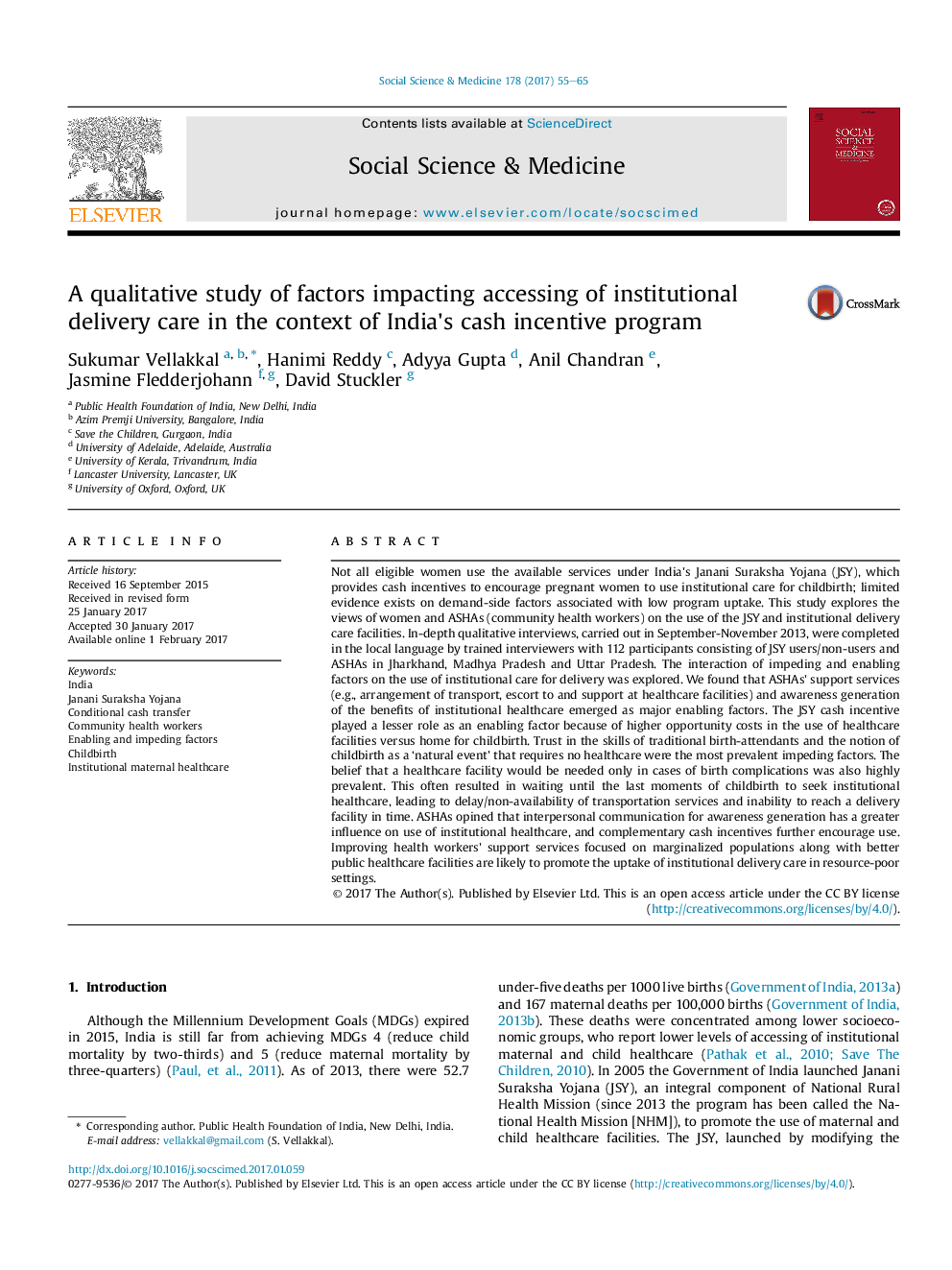| کد مقاله | کد نشریه | سال انتشار | مقاله انگلیسی | نسخه تمام متن |
|---|---|---|---|---|
| 5046653 | 1475991 | 2017 | 11 صفحه PDF | دانلود رایگان |
- Cash incentive is not a key enabling factor to accessing institutional delivery care.
- Community health workers' support services is a predominant enabling factor.
- High opportunity costs (monetary and real) is a key impeding factor.
- Skepticism about health service quality and socio-cultural notions are impeding factors.
Not all eligible women use the available services under India's Janani Suraksha Yojana (JSY), which provides cash incentives to encourage pregnant women to use institutional care for childbirth; limited evidence exists on demand-side factors associated with low program uptake. This study explores the views of women and ASHAs (community health workers) on the use of the JSY and institutional delivery care facilities. In-depth qualitative interviews, carried out in September-November 2013, were completed in the local language by trained interviewers with 112 participants consisting of JSY users/non-users and ASHAs in Jharkhand, Madhya Pradesh and Uttar Pradesh. The interaction of impeding and enabling factors on the use of institutional care for delivery was explored. We found that ASHAs' support services (e.g., arrangement of transport, escort to and support at healthcare facilities) and awareness generation of the benefits of institutional healthcare emerged as major enabling factors. The JSY cash incentive played a lesser role as an enabling factor because of higher opportunity costs in the use of healthcare facilities versus home for childbirth. Trust in the skills of traditional birth-attendants and the notion of childbirth as a 'natural event' that requires no healthcare were the most prevalent impeding factors. The belief that a healthcare facility would be needed only in cases of birth complications was also highly prevalent. This often resulted in waiting until the last moments of childbirth to seek institutional healthcare, leading to delay/non-availability of transportation services and inability to reach a delivery facility in time. ASHAs opined that interpersonal communication for awareness generation has a greater influence on use of institutional healthcare, and complementary cash incentives further encourage use. Improving health workers' support services focused on marginalized populations along with better public healthcare facilities are likely to promote the uptake of institutional delivery care in resource-poor settings.
Journal: Social Science & Medicine - Volume 178, April 2017, Pages 55-65
